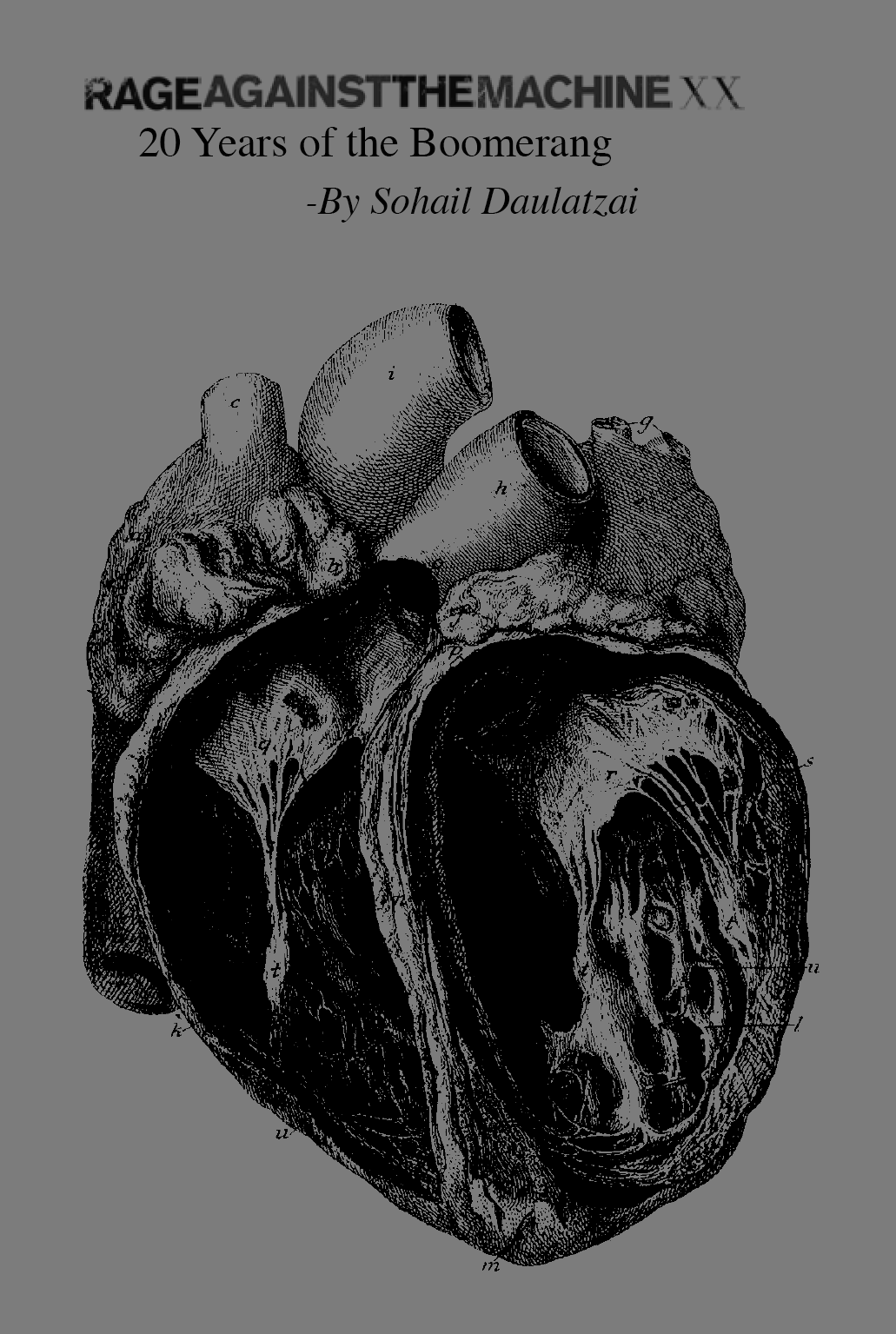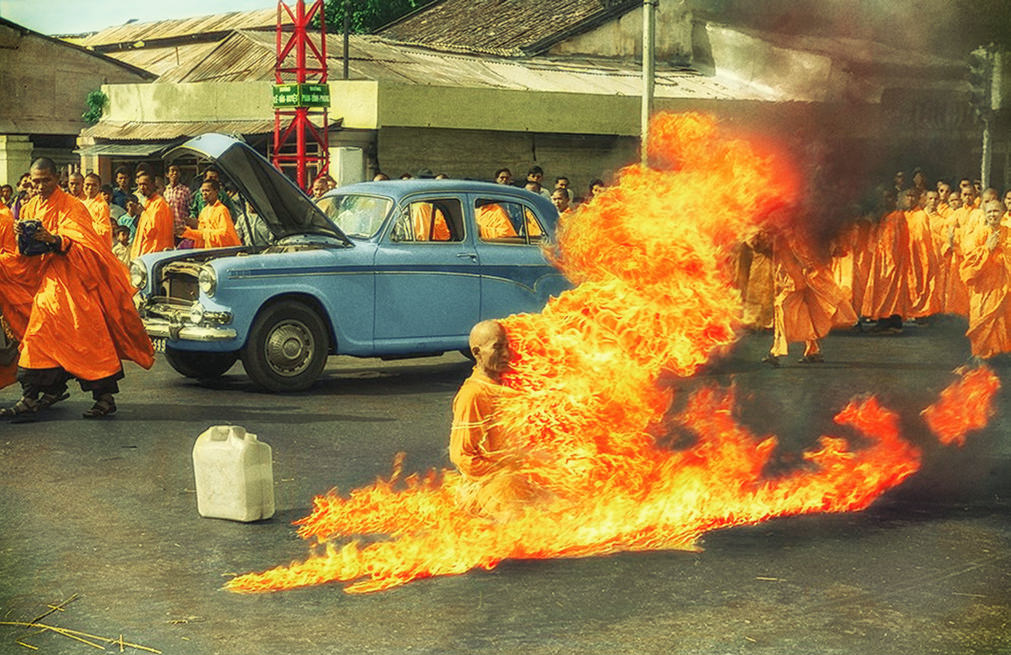20 Years of the Boomerang
Liner notes to Rage Against the Machine XX Deluxe Box Set
As the rubble was still smoldering and the glasses were being raised to celebrate the end of history, the music of Rage Against the Machine echoed across the ruins of the New World Order, a volatile balance between poetry and prophecy that served as a dirty bomb in the master’s house. As inheritors of that aesthetic of hunger that defined the populist arts of the Mexican Muralists, OSPAAAL and the radical cinema of the Third World, Rage’s music was a cultural rupture, static amidst the sonic serenity of radio, and a hanging dog on pop’s lamp post. While some still wonder why Rage’s message had to be so fiery and unflinching, the more urgent and revealing question is: what was it that made Rage Against the Machine so necessary in the first place?
Forged out of the crucible of the post-Black Power bum rush and the dirty wars of the Reagan-Bush regimes, punk rock and hip-hop were meant to be that chin check to Mr. Charlie. But when the energy of 80’s hardcore and hip-hop broke through and became the early 90’s “grunge” rock and “gangsta” rap that kicked off the major label feeding frenzy, Rage Against the Machine not only stood out with their sound, but also with their political defiance. They channeled Minor Threat and Public Enemy, Bad Brains and Boogie Down Productions. But like punk and hip-hop before them, Rage didn’t signal the beginning of something, they warned us about the end of everything – their songs epitaphs that painted a haunting portrait for those of us at the tattered edges of thing called America.
Though the sounds were heavy, raw and powerful, Rage was, more than anything else, smart and nimble. Revolutionary art demands revolutionary aesthetics, and like the films The Battle of Algiers and Salt of the Earth, Rage’s first album lit a fuse with an alchemy of styles that didn’t just break down the walls of genre that segmented audiences, it also shattered the boundaries between communities that those walls were meant to divide, radically democratizing sound and political possibility. While “Killing in the Name” and “Freedom” became the signature songs from their debut, it was tracks like “Fistful of Steel,” “Take the Power Back,” “Township Rebellion,” “Wake Up,” and their later work where Rage transcended that pantheon of protest music, and laid claim to that politically defiant, genre defying cadre of artists like The Clash and Fela Kuti. Their debut album was not only a lament and a cautionary tale, it was a call to arms, the opening salvo for a band that has defined political activism for more than a generation.
But it was the tension that Rage created and harnessed – between punk and hip-hop, radical and mainstream, capitalism and its discontents, singing and swinging – that really gave the band its enduring power and subversive appeal. Because never before, and more than likely never again, will we see any band or artist with such radical politics occupy – no hijack – the mainstream. That’s part of why they were so threatening, they shattered the illusion of the Dream, especially during the 1990’s when the mantra of globalization and the fall of the Berlin Wall signaled that capitalism had not only won, but was the answer. And while Rage’s popularity might seem to give truth to that lie, a deeper more penetrating truth lay just beneath the surface – that what Rage’s resonance really revealed was that this American idyll that was so sought after and so celebrated was nothing more than mere spectacle.
It’s bittersweet though, because the music from their debut still rings true – a testament to great songs no doubt, but also to the fact that Babylon is still in full effect. The blocks are hot worldwide, and the drums of the warfare state continue to keep time. But as America vests up, Rage’s music remains the head shot. That fiery combination of pirate radio and guerilla cinema, Rage was Siqueiros on wax, sound murals that brought together Zapata and Malcolm, connected Palestine to Aztlán, and inspired us through their dissonant tones and cathartic poetry to pick up the remnants and make something new, the way that abandoned buildings became canvas, cardboard a dance floor and old records became new sounds. It’s been twenty years of Rage and it’s still upon you. Let’s choose up – and know that history will absolve us.


